The
Two RV Gypsies: Full-Time RVers
at Zion National Park
August 11, 2012 |
|
Zion National Park is located in the Southwestern United States, near Springdale, Utah. A prominent feature of the 229-square-mile park is Zion Canyon, which is 15 miles long and up to half a mile deep, cut through the reddish and tan-colored Navajo Sandstone by the North Fork of the Virgin River. The lowest elevation is 3,666 feet at Coalpits Wash and the highest elevation is 8,726 feet at Horse Ranch Mountain. |
|
As the two RV Gypsies entered Zion National Park from the east entrance, they immediately were amazed by a colorful display of orange, brown and white slickrock that included one of the parks landmarks, Checkerboard Mesa (SHOWN BELOW). The majestic criss-crossed mountain appeared as a massive hill towering 900 feet above the Zion-Mt. Carmel Highway and resembled a giant, extended chess or checkerboard.
The vertical and horizontal fissures were more evident on the north side of the mesa, where most of the photographs of the mountain were taken. The left to right deep scratches are due to a north to south wind direction while the vertical cracks are a result of weathering, a cycle of freezing and thawing. Change still continues in the park, so much in fact that the massive monoliths will eventually break down and once again become great dunes of sand.
|
|
Below: Karen Duquette at Checkerboard
Mesa |
|
|
Below: Checkerboard Mesa and Crazy
Quilt Mesa, another wonderful example of crossbedding. |
|
Below: Crazy Quilt Mesa, which is immediately west of Checkerboard
Mesa.
|
|
|
|
|
|
Lee Duquette stayed by the roadside to take the above panorama photo, while Karen Duquette took a short walk beside Crazy Quilt Mesa. Then Lee turned around to photograph Karen. |
|
|
|
Below: Temple Cap Formation |
|
|
|
Below: Follow the red asphalt road
|
|
|
|
|
|
|
|
|
|
|
|
|
|
Below: The two RV Gypsies drove their truck
through a tunnel. Because of the significant planning, skills, materials,
and overall design and engineering, the Zion Mt. Carmel Highway and
Tunnel are listed in the National Register of Historic Places
and in May 2012, was designated as a Historic Civil Engineering Landmark
by the American Society of Civil Engineers. |
|
|
|
|
Below: The two RV Gypsies
not only had to go through the cliff via a tunnel, they had to descend
to the canyon floor via a series of many switchbacks. Exiting the tunnel,
one of the road switchbacks is shown below. |
|
|
 In the 1920s, the east end of the canyon appeared to be a dead end, an impassable barrier to transportation. And the cliffs presented the toughest challenge to highway engineers. Building a highway over or around it was not possible. Their solution: a one-mile tunnel behind the cliff face. When the tunnel and highway were completed in 1930, it opened the region to motor tourism, linking Zion to Bryce and the Grand Canyon's North Rim. In the 1920s, the east end of the canyon appeared to be a dead end, an impassable barrier to transportation. And the cliffs presented the toughest challenge to highway engineers. Building a highway over or around it was not possible. Their solution: a one-mile tunnel behind the cliff face. When the tunnel and highway were completed in 1930, it opened the region to motor tourism, linking Zion to Bryce and the Grand Canyon's North Rim.
Now the tunnel itself has become a kind of barrier, as today's RVs and tour buses are too large for two-way traffic within the tunnel. Their solution: to charge $15.00 for any vehicle exceeding 94 inches in width and escorting them through the tunnel.
After going through the tunnel, the two RV Gypsies looked back to the east at the cliff. |
|
|
Below: Another window in the tunnel |
|
|
|
|
|
Below: At the Zion Canyon
Visitor Center, shuttle buses had to be taken to see the rest of Zion
National Park. Zion Canyon Shuttle stops at eight locations in the park.
Riders may get on and off as often as they like. Riding the shuttle
is free. The shuttle has big windows though which the two RV Gypsies
were able to take some beautiful photographs, shown below. |
|
|
|
|
|
|
|
|
|
|
|
|
Below: The last Shuttle stop was the Temple
of Sinawava. Here the river canyon narrows abruptly. The cliffs'
colors and textures are clues that two different rock layers intersect
at the riverbed and affect how the canyon is carved.
Confined within the hard Navajo sandstone upstream, the Virgin River is forced to slice straight down, creating a tight, perpendicular gorge. Everyone got off the shuttle to explore the Riverside Walk. |
|
Below: Riverside Walk was an easy trail.
Traveling upriver, the trail passed by lush vegetation - a desert swamp.
Overflow from occasional cloudbursts and spring runoff left the low
ground moist, creating a cooler, greener microclimate of ferns and mosses. |
|
|
Below: Many squirrels were along the Riverwalk
Trail looking for a hand-out. The park urges people NOT to feed the
squirrels. |
|
|
|
Below:While taking a break along the pathway,
Lee Duquette took panorama photos sweeping the camera upward. The cliffs
were just too tall to photograph without the panorama. |
|
|
|
Below: At the end of the trail, the two
RV Gypsies descended down a handful of stairs and over a few rocks to
find a crowd of people crossing the Virgin River. Everything in Zion
takes life from the Virgin River's scarce desert waters. Water flows
and solid rock melts into the cliffs and towers. |
|
|
Below: Karen Duquette decided to join
the crowd so she walked across the Virgin River. Lee decided that he
would rather not get his hiking boots wet and photographed Karen from
the side. The Virgin River was very rocky in this area, so Karen used
a walking stick to help her find and step over the large rocks that
were hiding under the water. |
|
|
|
|
Below: Although many people continued on
down the Virgin River where the sides of the cliffs are said to get
very narrow, Karen Duquette decided not to go any further than where
she could be seen by Lee, who did not want to adventure any further.
So Karen took a break to sit in the water and cool down a bit. Lee thought
she was nuts. |
|
|
But Karen Duquette wanted to cool off even
more, given the hot weather, so despite being in regular hiking clothes
and hiking boots, into the cold Virgin River she went, once again. Her
hiking boots made squishing noises all the way back to the shuttle bus. |
|
|
|

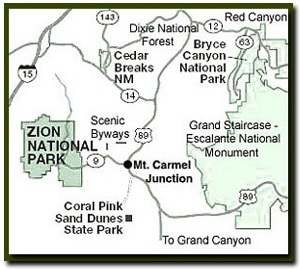
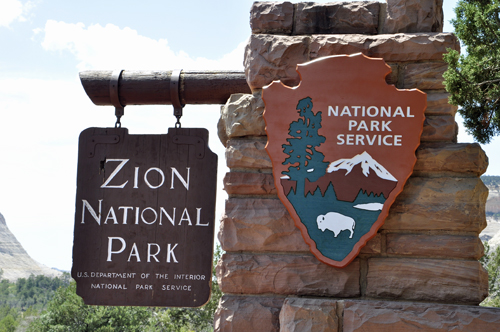

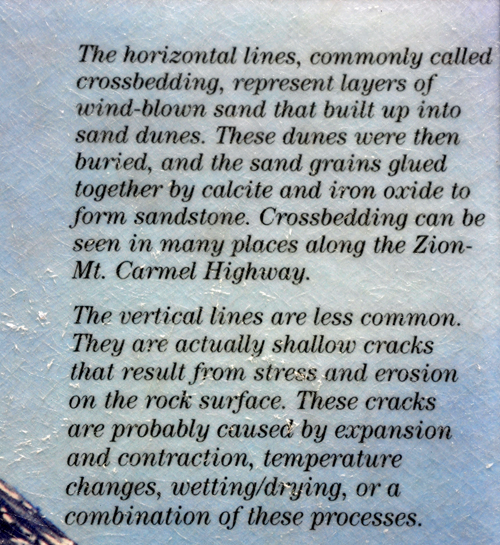
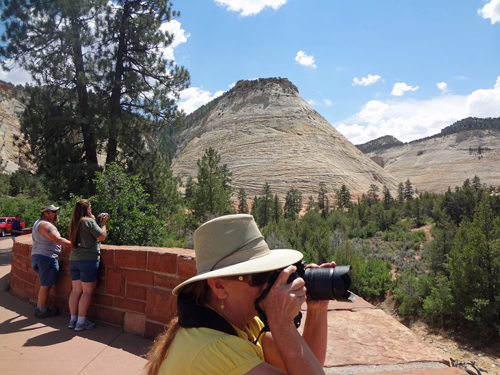
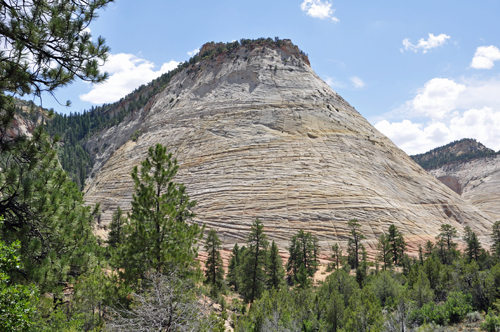

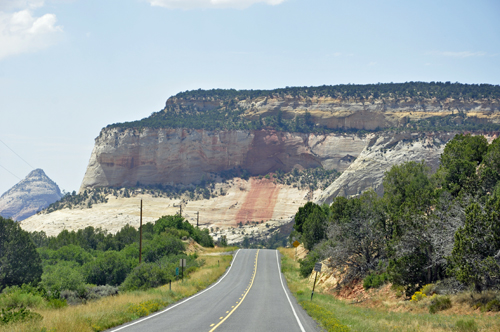
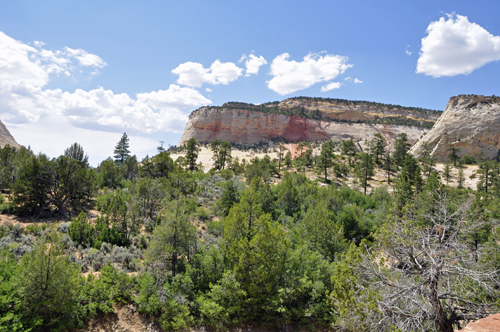
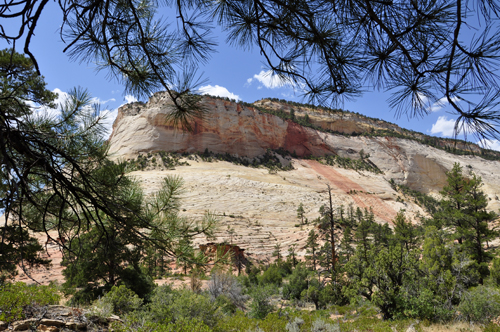
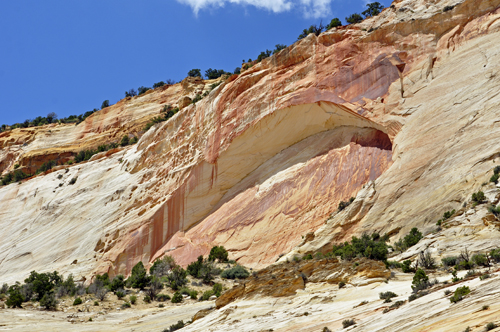

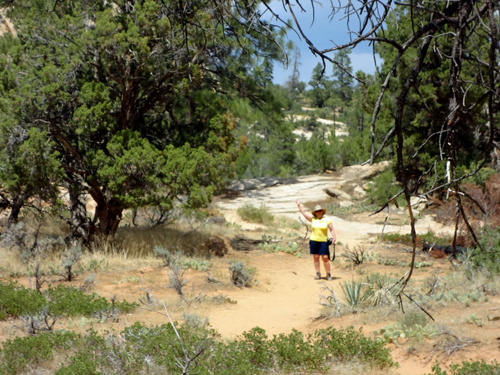
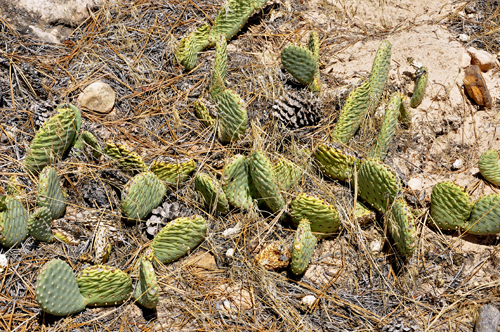
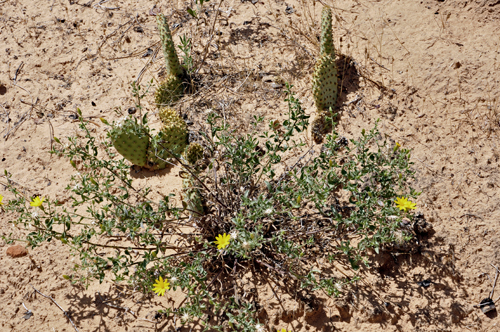
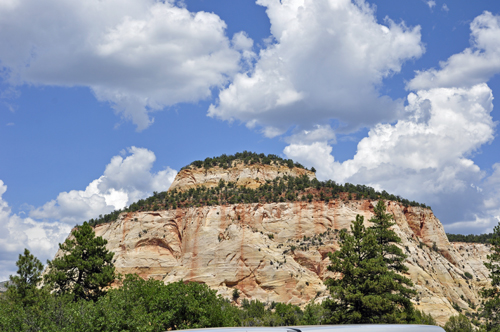
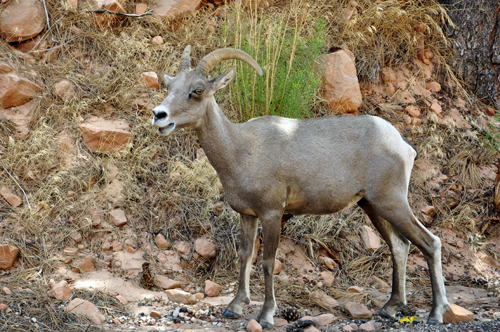
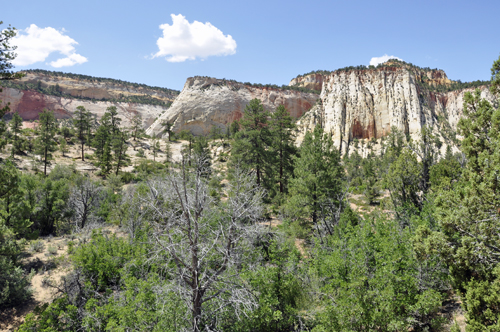
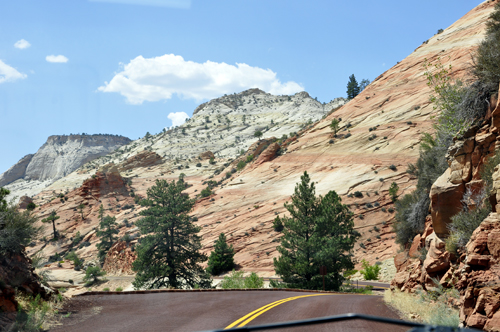
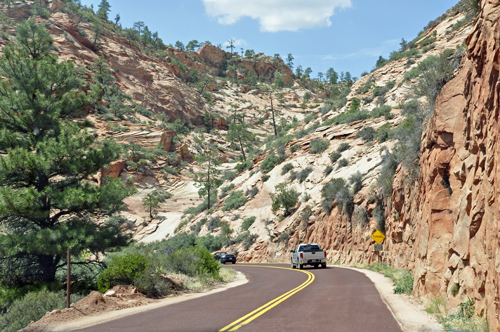
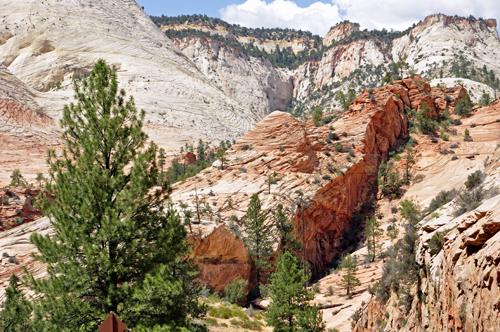
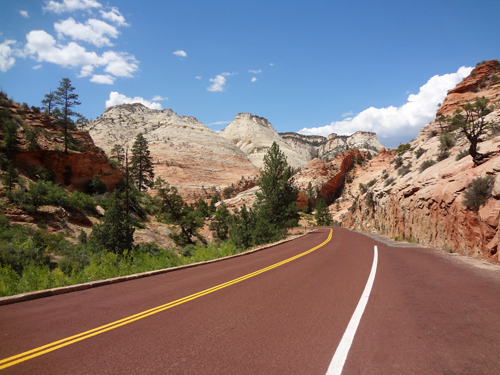
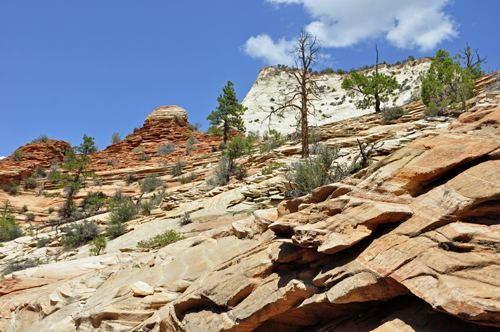
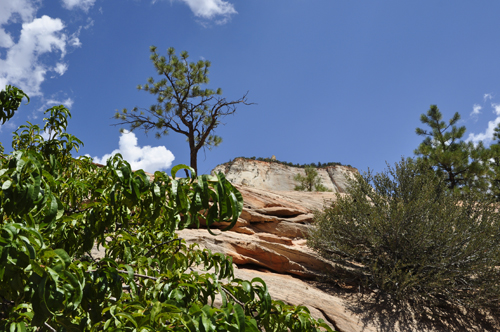
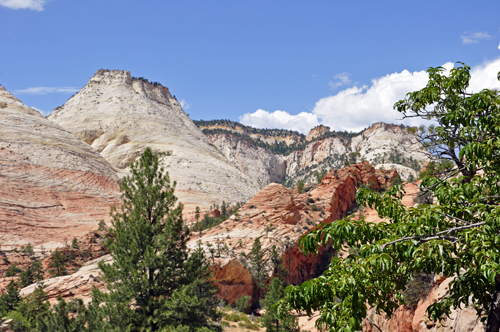
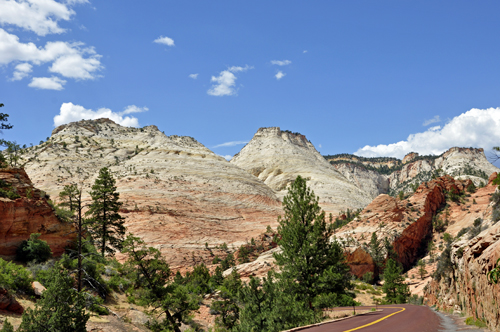

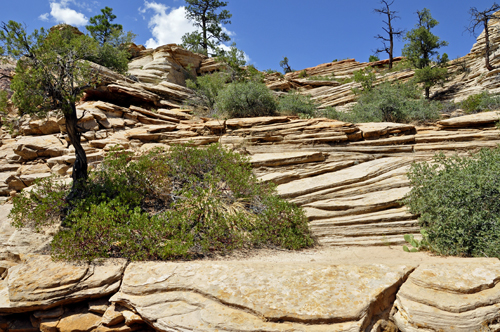
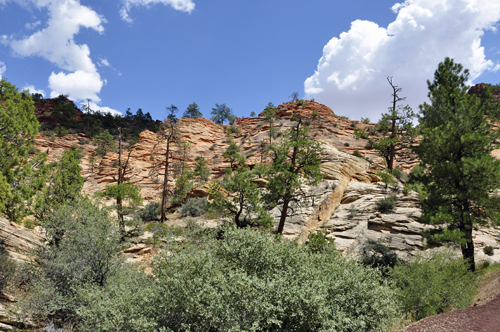
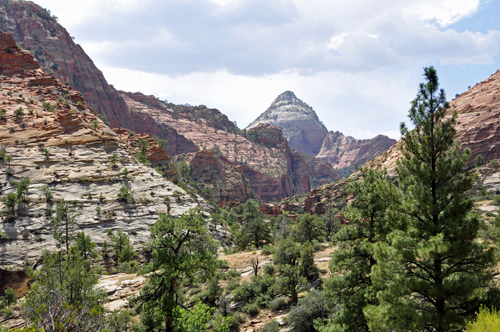
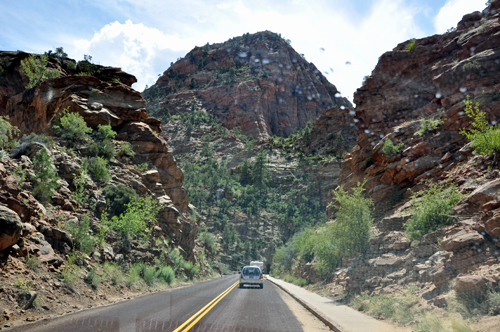
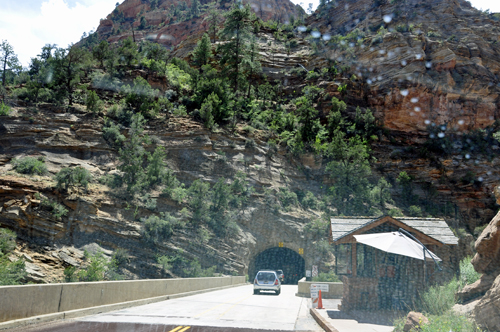
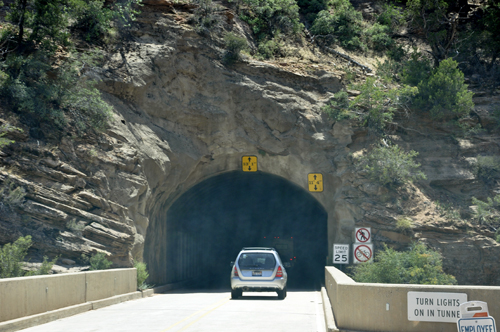
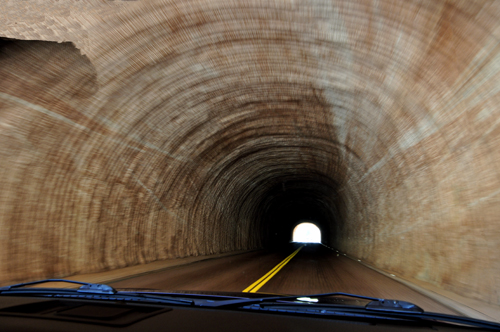
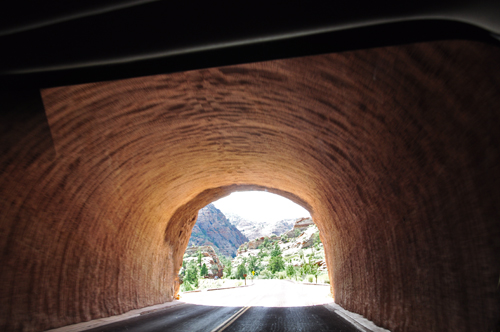
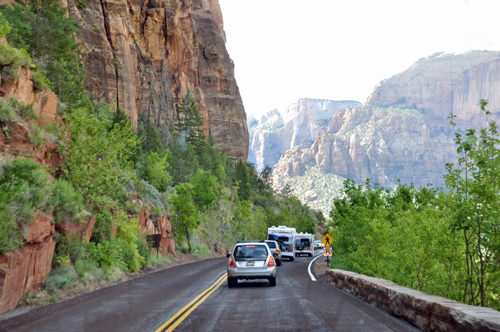
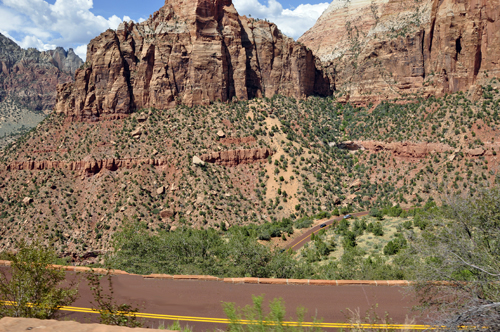
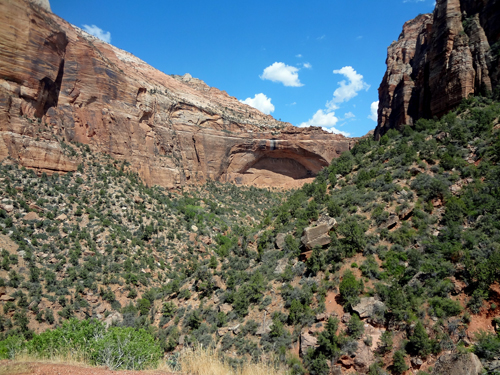
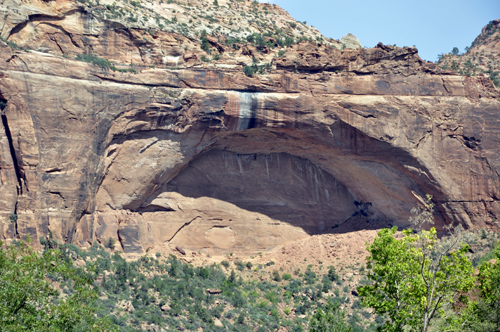
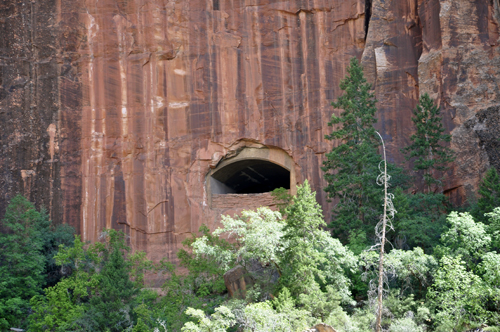

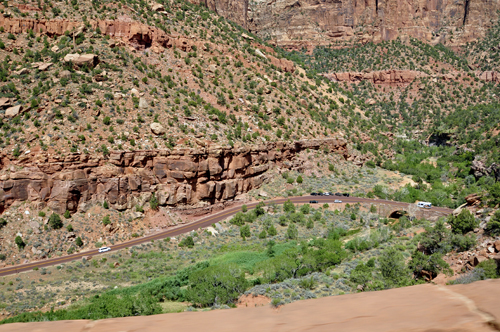
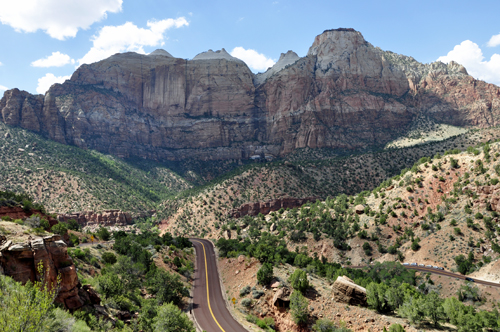

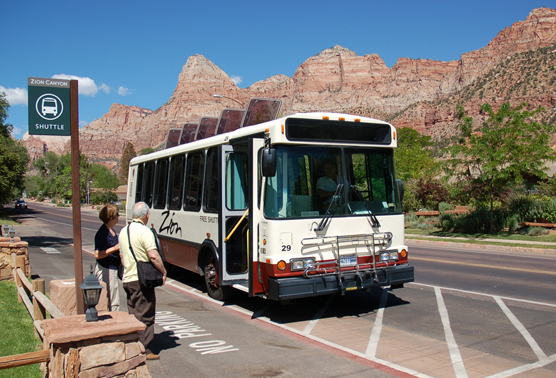
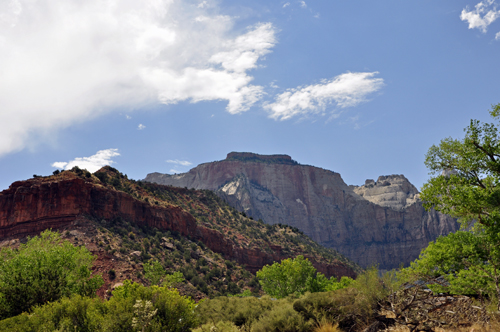
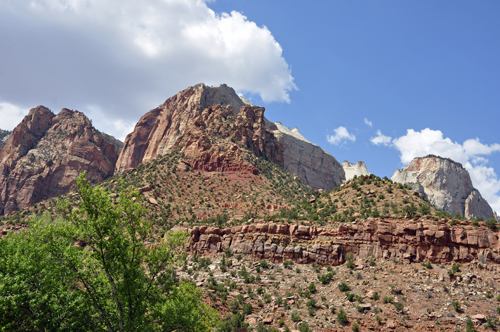
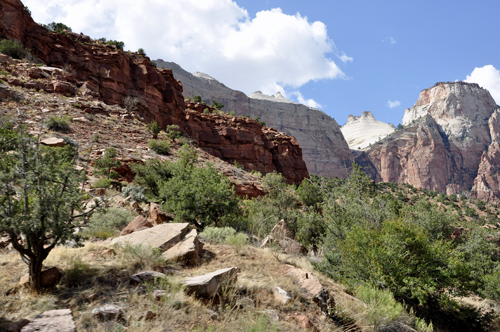
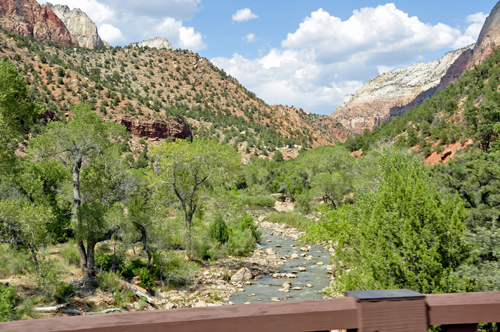
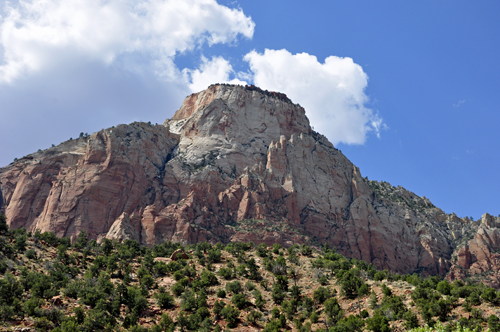
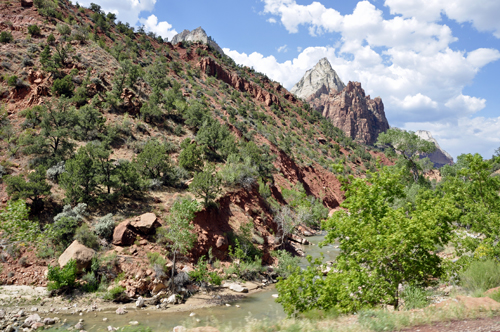
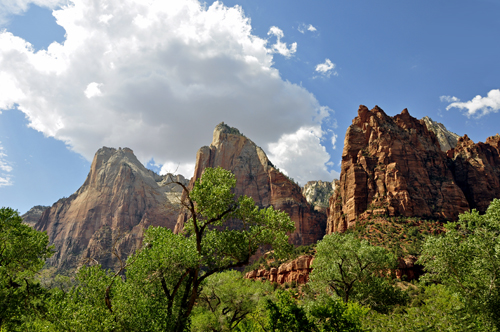

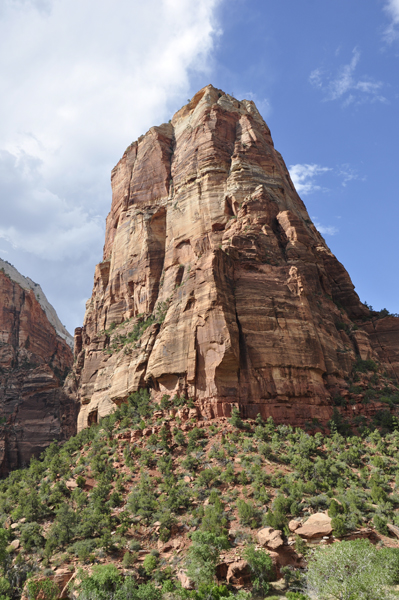
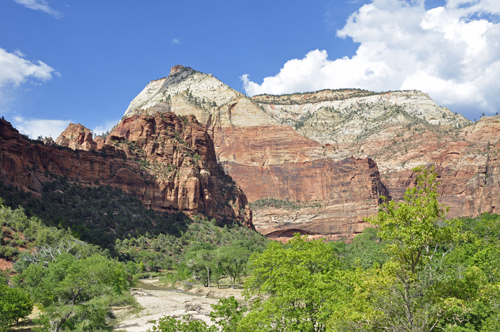

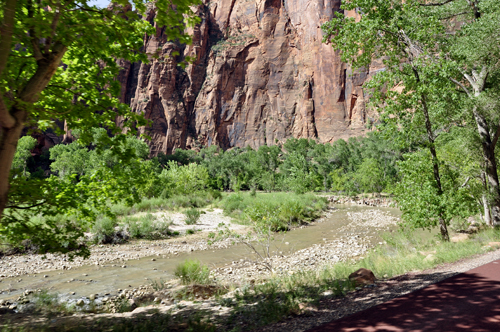
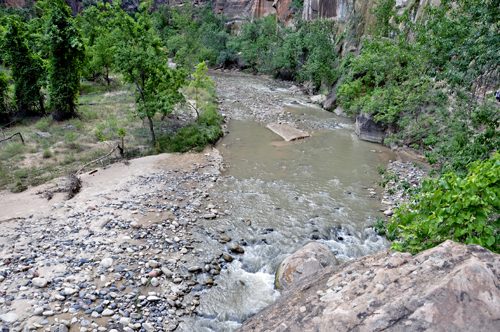
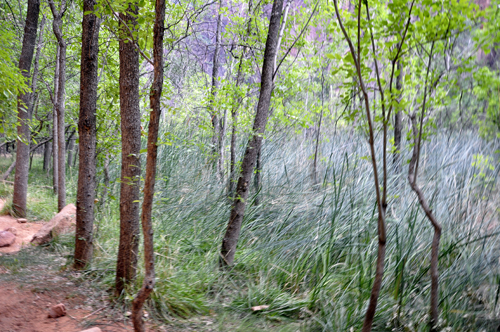
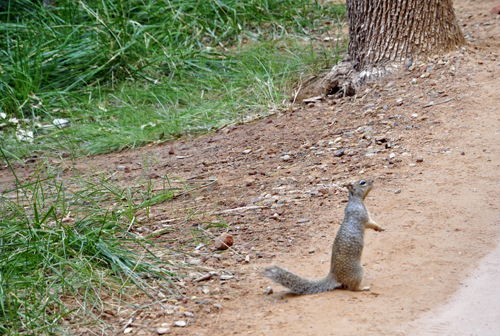
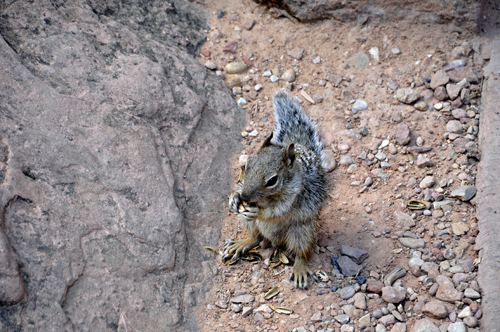
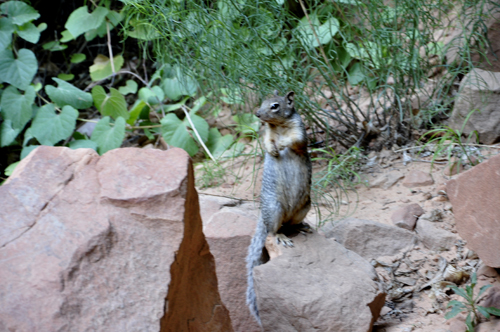
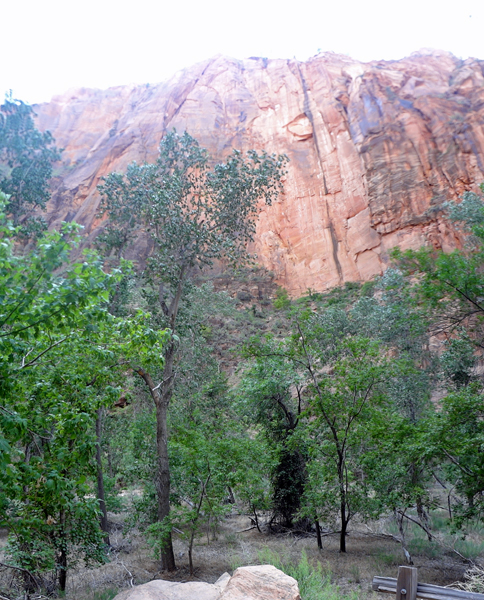
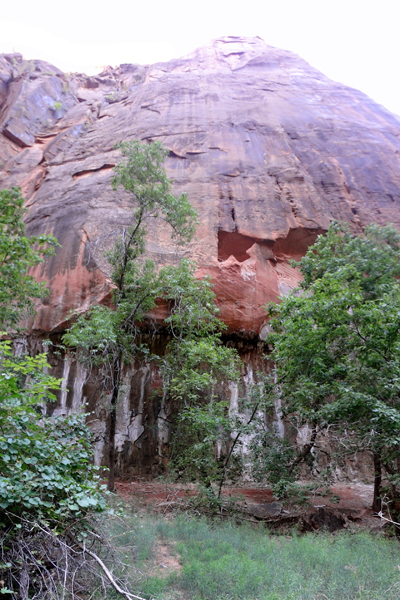
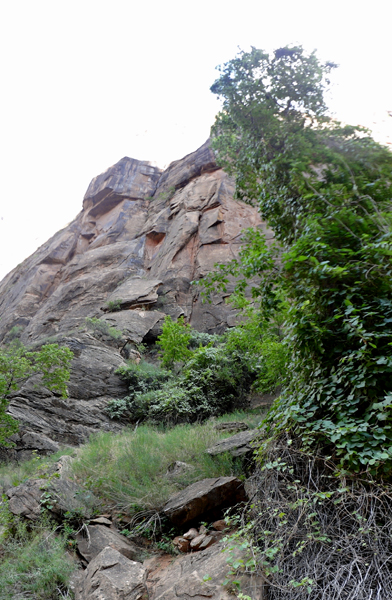
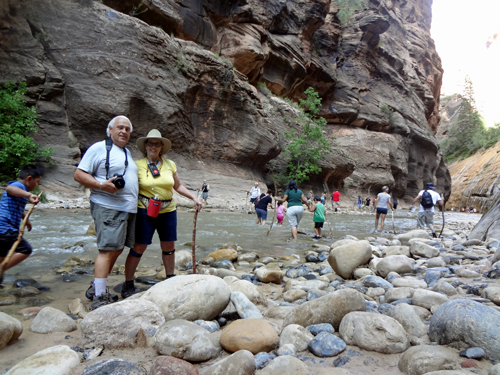
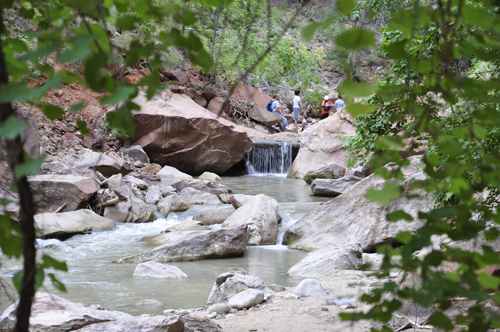
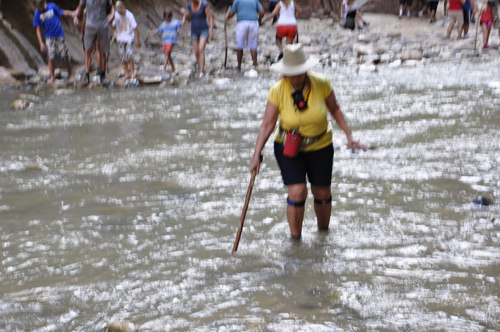
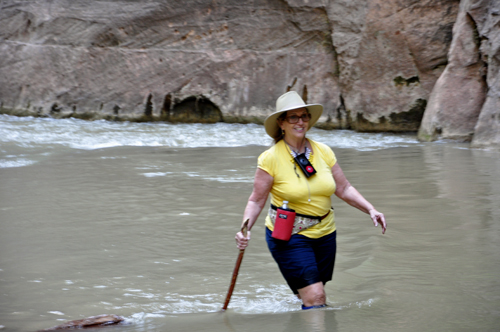
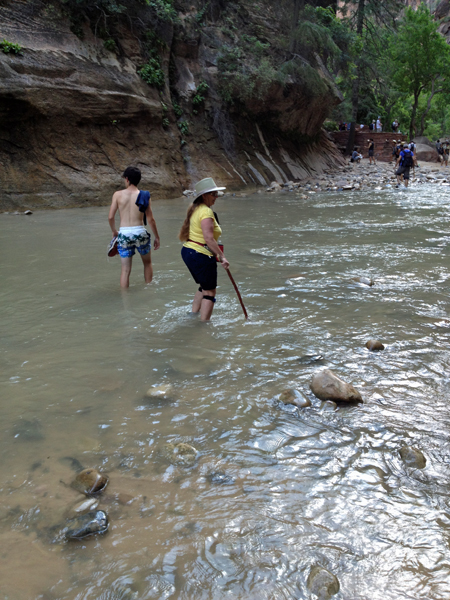
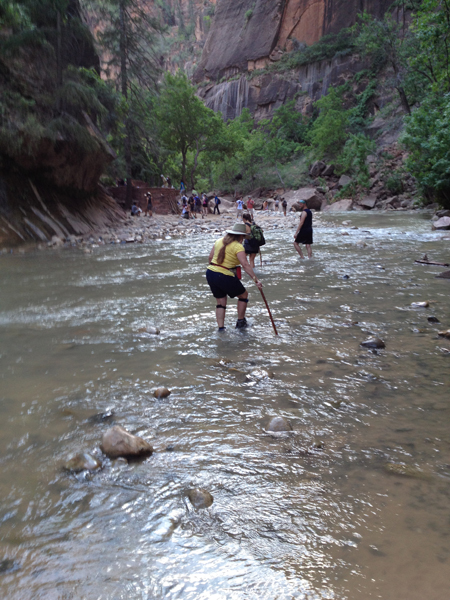
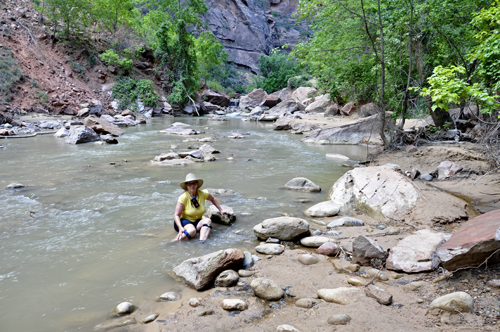
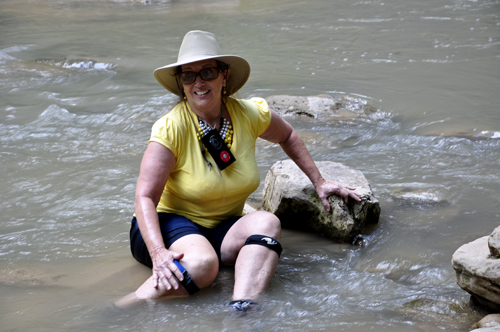
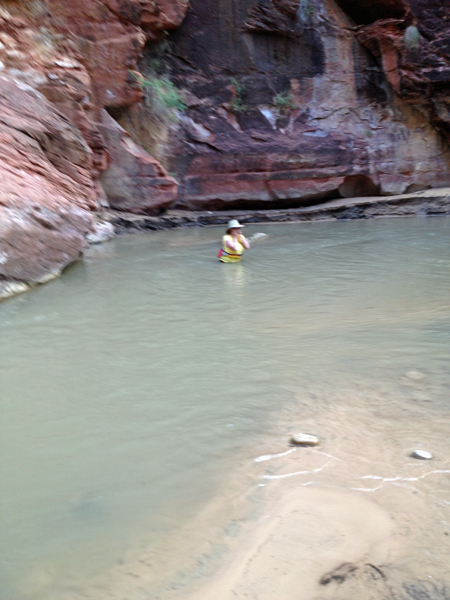
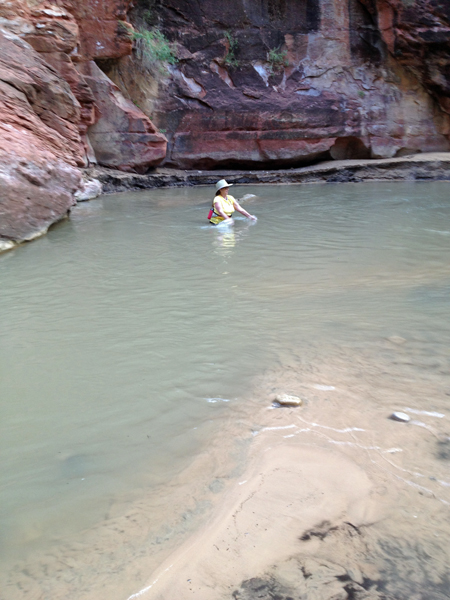
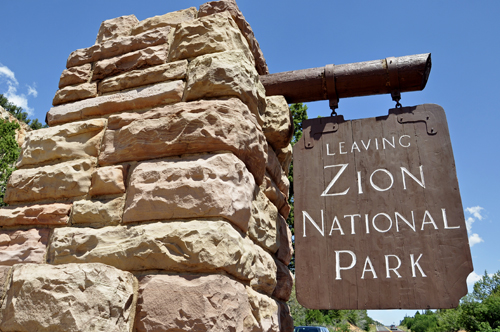
 In the 1920s, the east end of the canyon appeared to be a dead end, an impassable barrier to transportation. And the cliffs presented the toughest challenge to highway engineers. Building a highway over or around it was not possible. Their solution: a one-mile tunnel behind the cliff face. When the tunnel and highway were completed in 1930, it opened the region to motor tourism, linking Zion to Bryce and the Grand Canyon's North Rim.
In the 1920s, the east end of the canyon appeared to be a dead end, an impassable barrier to transportation. And the cliffs presented the toughest challenge to highway engineers. Building a highway over or around it was not possible. Their solution: a one-mile tunnel behind the cliff face. When the tunnel and highway were completed in 1930, it opened the region to motor tourism, linking Zion to Bryce and the Grand Canyon's North Rim.
























